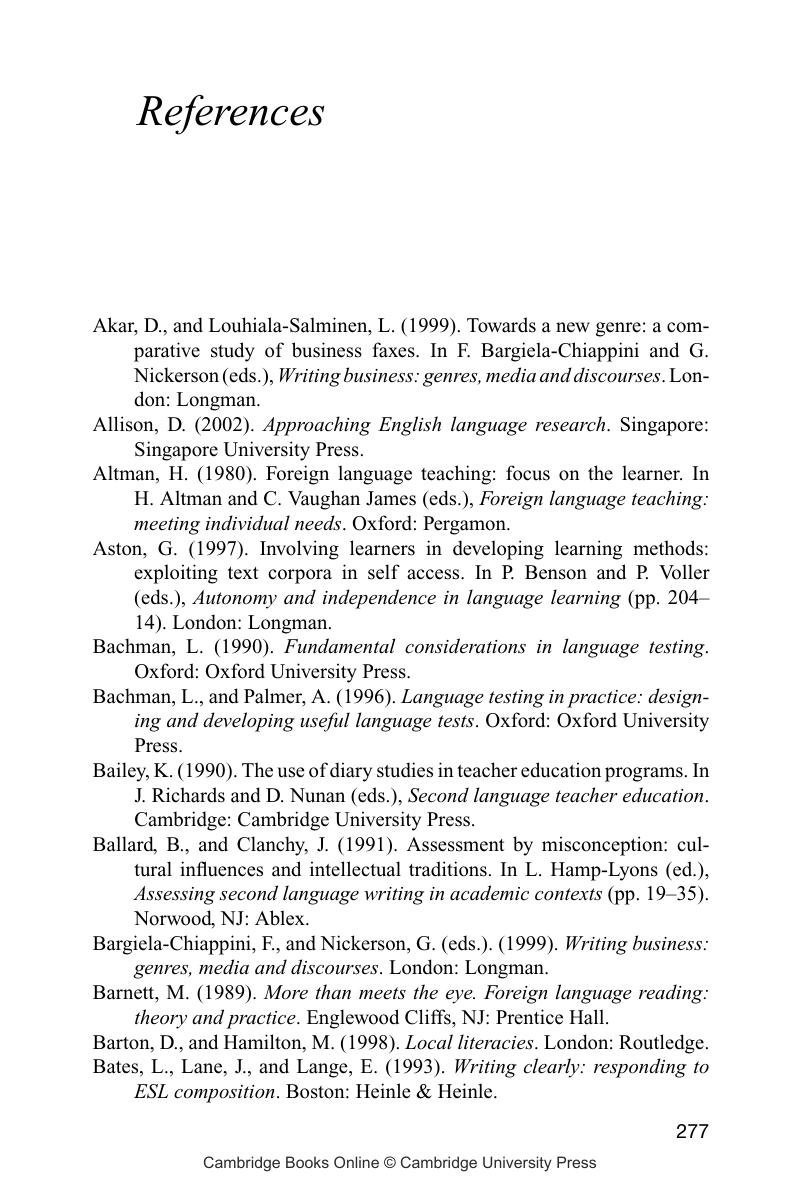Book contents
- Frontmatter
- Contents
- PERMISSIONS ACKNOWLEDGEMENTS
- Series Editor's Preface
- Preface
- Acknowledgments
- 1 Writing and teaching writing
- 2 Second language writers
- 3 Syllabus design and lesson planning
- 4 Texts and materials in the writing class
- 5 Tasks in the L2 writing class
- 6 New technologies in writing instruction
- 7 Responding to student writing
- 8 Assessing student writing
- 9 Researching writing and writers
- References
- Index
- References
References
Published online by Cambridge University Press: 27 March 2010
- Frontmatter
- Contents
- PERMISSIONS ACKNOWLEDGEMENTS
- Series Editor's Preface
- Preface
- Acknowledgments
- 1 Writing and teaching writing
- 2 Second language writers
- 3 Syllabus design and lesson planning
- 4 Texts and materials in the writing class
- 5 Tasks in the L2 writing class
- 6 New technologies in writing instruction
- 7 Responding to student writing
- 8 Assessing student writing
- 9 Researching writing and writers
- References
- Index
- References
Summary

- Type
- Chapter
- Information
- Second Language Writing , pp. 277 - 294Publisher: Cambridge University PressPrint publication year: 2003



